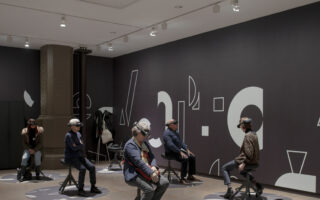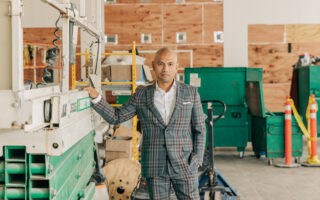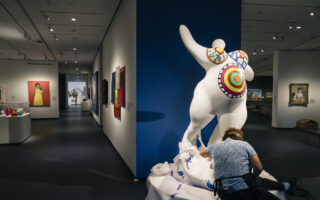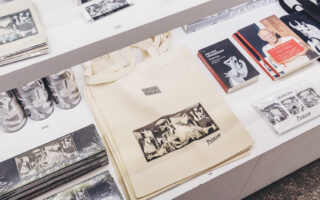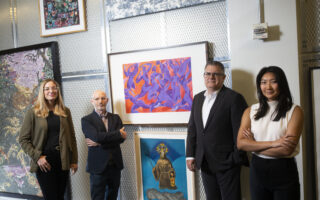To make blockbuster shows, museums are turning to focus groups
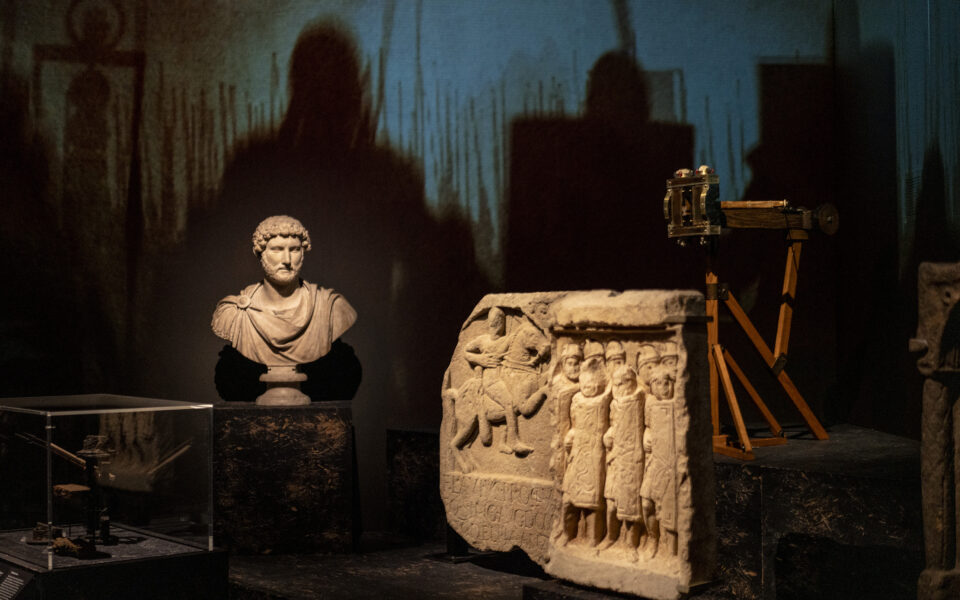
In January 2023, 14 members of the British public entered a wood-paneled room in the back of the British Museum for a secret presentation. They were there to learn about an exhibition still in development, which the museum wanted kept under wraps.
On screen in a prerecorded video, the museum’s curator of Roman and Iron Age coins, Richard Abdy, outlined his plans for a show about life in the Roman Empire’s army. The exhibition would take visitors from a soldier’s recruitment to his retirement, he said, and would feature hundreds of objects, including the armor that warriors wore on the battlefield and letters they wrote home to their families.
When the presentation was finished, a staff member from Morris Hargreaves McIntyre, a company that runs focus groups, asked the museumgoers for their thoughts on aspects of Abdy’s plan, including which types of artifacts the museum should show, how they should be arranged and even how much entry should cost.
Most of the participants seemed excited, according to an anonymized report for the British Museum. Several attendees said they especially liked that the exhibition would focus on the stories of individual soldiers, including everyday subjects such as their food and pay.
Other participants were more critical. “It comes across a little dry,” one said. Another said, “It would be quite boring for a kid.”
For decades, politicians have used focus groups to test policies and slogans, and corporations have relied on such groups to evaluate their products. But some of the world’s most renowned museums have also been using the marketing research technique to fine-tune exhibitions, develop marketing materials and ensure they entice the broadest possible audience.
For “Legion: Life in the Roman Army,” which opened last week, that meant making the curator’s vision a little more family-friendly. Beneath many of the artifacts are panels aimed at young visitors, featuring simple explanations of the items, and cartoons from “Horrible Histories,” a popular British children’s TV show and book series.
Among displays of ancient armor, children can try on a replica soldier’s helmet, and can measure their height to see if they met the Roman army’s strict standards. (Soldiers had to be at least 5-foot-6.)
The British Museum has been using focus groups since the mid-2000s, said Stuart Frost, who oversees that work. Sometimes, the attendees’ feedback could be “a shock to the curatorial ego,” Frost said, giving the example of a 2017 exhibition on the Scythians, nomadic tribespeople from Siberia. When that show was in development, he recalled, not a single focus group member had heard of the Scythians. “I remember sitting opposite the curator and seeing his eyebrows raise in surprise,” Frost said. But that feedback helped the museum pitch the show at the right level for the public.
Initial plans for an exhibition on the Rosetta Stone, the artifact that helped reveal the meaning of Egyptian hieroglyphs, also received an unexpected response, Frost recalled. Focus group participants said that a whole show about the stone didn’t excite them, because its story was already well known and the object was prominently displayed in the museum’s permanent collection. The curators refocused the exhibition, which opened in 2022, so it explored what hieroglyphs, once deciphered, had shown about life in ancient Egypt.
At other times, focus groups gave museum administrators the confidence to go ahead with shows over which they had doubts. When Frost organized sessions before a 2013 exhibition on erotic Japanese woodblock prints, known as shunga, he was concerned that participants would say such sexually explicit art was unsuited to a show at the British Museum, he said. The participants “accepted them as art,” Frost said, and the show became an R-rated hit.
But, Frost added, an emphatic thumbs-down from a group can kill off a show. When the museum tested an early-stage idea for a show of artifacts from Nubia, the ancient region of northeastern Africa, participants showed little interest, he said, and the exhibition was abandoned.
Andrew McIntyre, a director of Morris Hargreaves McIntyre, said his firm organized panels for 20 to 30 museums a year, including the San Francisco Museum of Modern Art and the Museum of Fine Arts, Boston. A spokesperson for the Van Gogh Museum, in Amsterdam, said it used groups to find the “most interesting angles” for exhibitions.
Focus group research was “mainly done by the largest museums,” McIntyre said, because of the cost involved. (Participants are paid for their time, on top of his company fee.) But there was no reason a local museum couldn’t try running a focus group itself, he said: “Invite 10 people in, give them some cake and coffee and ask them what they think.”
Touring the “Legion” exhibition, Abdy said the focus group had “reinforced” his own ideas for the show, including the decision to focus on rank-and-file soldiers instead of renowned generals. His curatorial ego wasn’t bruised by the process; in fact, he said, he looked forward to working with focus groups again.
“It’s always a good idea to consult the public,” Abdy said.
This article originally appeared in The New York Times.

